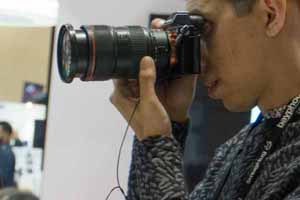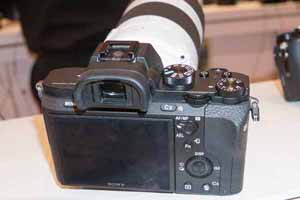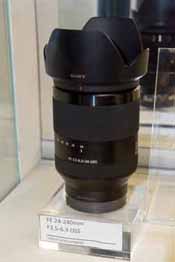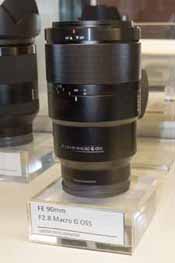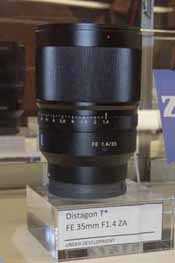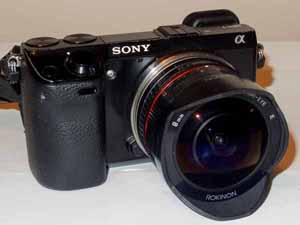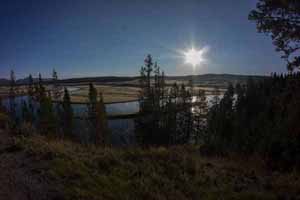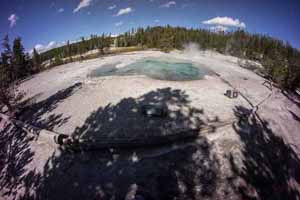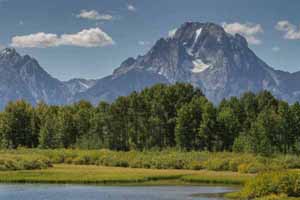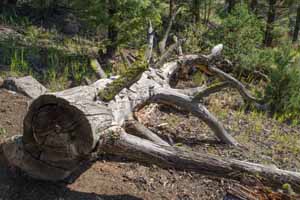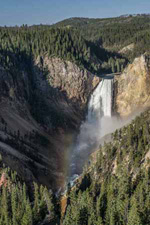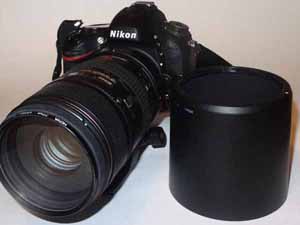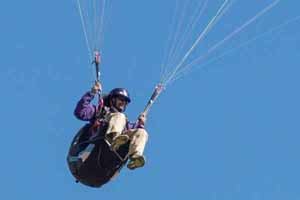Online Magazine
Recent Posts
- Safeguard your Cellphone Photos
- Black & White to Color – Instantly
- Wearing Many Hats
- Video Roundup
- Rescuing Your Blurry Pictures
- Showing Their Age
- What is Your Angle?
- Panorama Photos
- Humorous Photos
- Close Ups
- Fisheye Pictures
- Photo Antiquities
- Printing Big
- Appreciating Scale
- Celebrity Sightings
Tags
More Places to Go
- Free "How-To" Books “How To” books for popular cameras 0
- Vist Us on Facebook keep in touch with us on Facebook 2
Archives
- July 2023 (1)
- March 2023 (2)
- February 2023 (1)
- December 2022 (1)
- October 2022 (1)
- September 2022 (8)
- August 2022 (9)
- July 2022 (1)
- June 2022 (1)
- June 2021 (1)
- May 2021 (1)
- March 2021 (5)
- February 2021 (4)
- January 2021 (2)
- April 2019 (1)
- March 2019 (1)
- February 2019 (1)
- October 2018 (2)
- April 2018 (1)
- March 2018 (4)
- February 2018 (1)
- November 2017 (1)
- August 2017 (1)
- June 2017 (1)
- April 2017 (1)
- March 2017 (5)
- February 2017 (2)
- January 2017 (1)
- October 2016 (1)
- September 2016 (1)
- August 2016 (1)
- July 2016 (1)
- May 2016 (1)
- April 2016 (1)
- March 2016 (2)
- February 2016 (1)
- January 2016 (2)
- December 2015 (1)
- November 2015 (1)
- October 2015 (3)
- April 2015 (1)
- March 2015 (5)
- February 2015 (1)
- January 2015 (4)
- December 2014 (2)
- November 2014 (5)
- October 2014 (2)
- September 2014 (1)
- August 2014 (2)
- July 2014 (1)
- May 2014 (1)
- April 2014 (5)
- March 2014 (5)
- December 2013 (2)
- November 2013 (18)
- October 2013 (1)
- September 2013 (1)
- August 2013 (1)
- July 2013 (1)
- June 2013 (3)
- May 2013 (1)
- April 2013 (2)
- March 2013 (1)
- February 2013 (1)
- January 2013 (1)
- December 2012 (1)
- November 2012 (2)
- October 2012 (2)
- September 2012 (5)
- August 2012 (2)
- July 2012 (1)
- June 2012 (1)
- May 2012 (1)
- April 2012 (4)
- March 2012 (1)
- February 2012 (1)
- January 2012 (3)
- December 2011 (1)
- November 2011 (3)
- October 2011 (1)
- September 2011 (2)
- August 2011 (2)
- June 2011 (3)
- May 2011 (4)
- April 2011 (8)
- March 2011 (8)
- February 2011 (10)
- January 2011 (6)
- December 2010 (11)
- November 2010 (14)
- October 2010 (6)
- September 2010 (12)
- August 2010 (2)
- July 2010 (4)
- June 2010 (3)
- May 2010 (1)
- April 2010 (1)
- March 2010 (2)
- February 2010 (1)
- January 2010 (1)
- December 2009 (1)
- November 2009 (2)
- October 2009 (2)
- September 2009 (1)
- August 2009 (3)
- July 2009 (2)
- June 2009 (1)
- May 2009 (2)
- April 2009 (1)
- March 2009 (2)
- February 2009 (1)
- January 2009 (3)
WPPI 2016
28th March 2016
The Wedding & Portrait Photography International Conference and Expo
Can you guess who the target audience is for this convention?
For those professionals who want to enhance their skills – posing, lighting, equipment, marketing – the WPPI is a week-long “university” taught by experts. This year’s WPPI took place March 3rd through March 10th at the MGM Conference Center in Las Vegas. WPPI organized more than 250 classes and seminars for 13,000 anxious attendees. These classes were taught by 175 instructors including notables such as Joe McNally, Tamara Lackey, Lindsay Adler, Roberto Valenzuela, Bambi Cantrell, Hanson Fong, Kevin Kabota, Jerry Ghionis and Gary Fong to name a few.
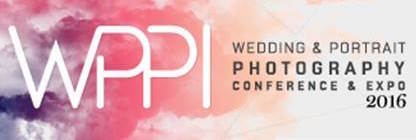
In addition to the conference, the expo highlighted 270 exhibitors showed the newest cameras, lenses, equipment, lighting, accessories, supplies, marketing material and services. All of the major camera manufacturers will set up booths to demonstrate their latest equipment.
Following is a look at those items that caught my attention at the this year’s WPPI a couple of weeks ago.
Presentations and SeminarsThere were many opportunities for everyone to learn new posing and lighting techniques right on the expo floor. All of the camera makers and many vendors were holding demonstrations conducted by well-known photographer/educators. |
|
 |
 |
|
|
|
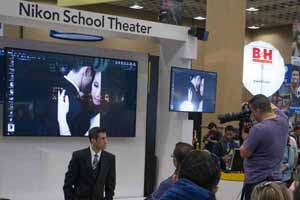 |
 |
|
|
|
 |
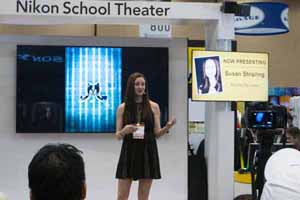 |
|
|
|
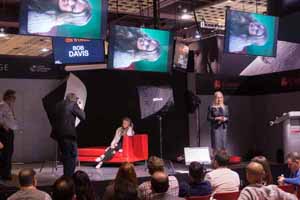 |
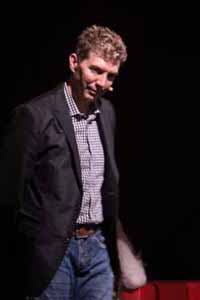 |
DXO One |
|
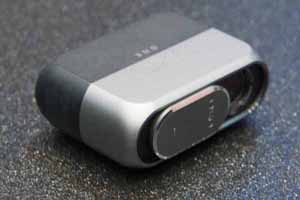 |
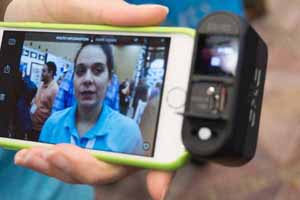 |
| This small unit is a camera that works in conjunction with an iPhone. With a large 20mp 1″ sensor and f/1.8 lens you attach it to your iPhone to control settings. It also works “off-phone” if you want a small, lightweight camera. Though small, it can capture RAW images too. I found it very straight-forward to use and the images were quite good considering the convention hall lighting.
Suggested price is $499. For more information please visit DXO |
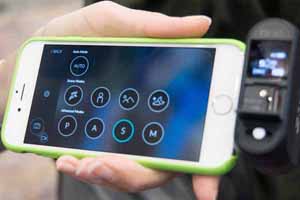 |
MagMod |
|
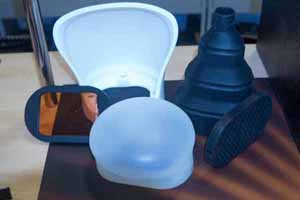 |
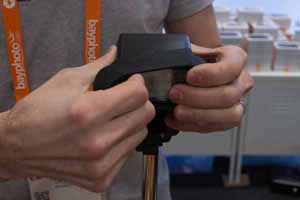 |
| MagMod makes a set of accessories to improve the quality of light from your flash unit. These include a snoot to narrow the light to a beam, a sphere to diffuse and soften the light and a bounce that reflects the light output and avoid harsh shadows, gel which add various colors to the light and grid to focus the light.
What is unique about these accessories is that become part of your flash unit using a magnet for instant attachment. Price for the complete set is $235. For more information please visit MagMod |
 |
RL Handscrafts |
|
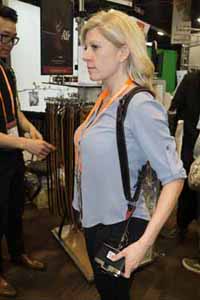 |
 |
| I received two demos at this booth. One was for their Derringer above left for carrying from 1 to 3 cameras. You wear the strap on both shoulders with wide padded straps that relieve pressure points and back. The straps are adjustable for easy access to any of the cameras. Price is $485.
For carrying two cameras, the Clydesdale above right can help you more easily carry your equipment. The strap attaches solidly to the camera’s tripod socket. RL makes several styles differing in weight, padding, air holes for easier breathing, color. Prices start at $205 to $425 for the deluxe version. |
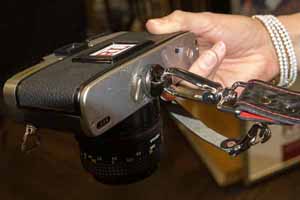 |
Sony G Master Lenses |
|
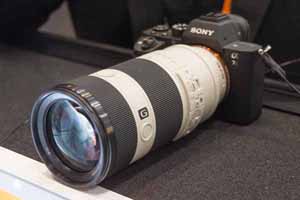 |
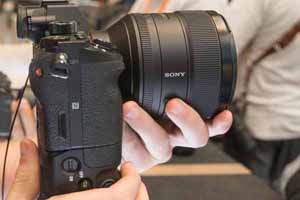 |
| Sony is the undisputed leader of mirrorless cameras. They have been rapidly adding lenses to support their highly acclaimed full-frame models: A7R II and A7S II cameras.
Three of Sony’s new lenses made it to WPPI for demoing. These are the 85mm f/1.4 GM, 70-200mm f/2.8 OSS and 24-70mm f/2.8 GM. Prices are $1800, $2900 and $2200 respectively. For the 70-200mm lens, Sony is also releasing 1.4X and 2.0X teleconverters. Sony claims a higher resolution of the G series lenses compared to others and superior auto focus performance. For more information please visit Sony |
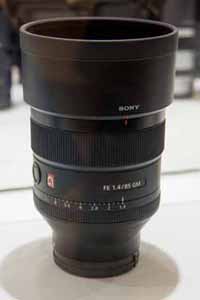 |
Spider Holster |
|
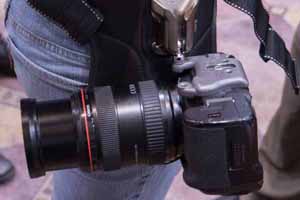 |
 |
| Spider makes a holster with a unique locking-clamping device for conveniently carrying your camera at your waist. The holster is adjustable and is worn like a belt to either side. The clamping device is solid and easily slides into the holster for hands-free carriage. Price for the Spider Pro holster is $135.
The company also has a variety of heavy duty hand straps that come in a variety of colors. All are made of durable material, attach to the camera with a tripod plate and include a removable wrist strap. Price for the black model is $65 and $75 for other colors. |
|
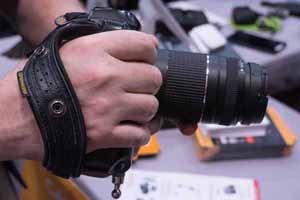 |
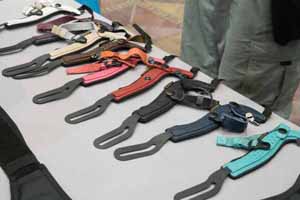 |
Written by: Arnie Lee
Sony A7 II
22nd March 2015
New Full Frame Mirrorless
I’ve been using several of Sony’s mirrorless cameras for three years or so. The three models that I regularly use are the NEX5, NEX7 and A6000 each with an APS-C size sensor. All three are compact and lightweight. Both the NEX7 and A6000 have viewfinders – a necessary feature that I expect in an advanced camera.
The A6000 has been my “go-to” camera for the past year. The quality of the images match up to those from the Canon 7D and Nikon D90 but with the added convenience of a noticeably smaller piece of hardware.
With this previous experience with mirrorless equipment, I went to the Sony booth at the Wedding & Portrait Photographers International Expo to have a look at the new full-frame Alpha 7 II.
The A7II has a full size 24MP sensor in a body that weighs a mere 21 ounces. This compares to the Canon 5D MkIII at 33 ounces or the Nikon D800 at 35 ounces. The physical size of these three cameras are (W x H x D) A7II is 5″ x 3-7/8″ x 2-3/8″ Canon 5D MkIII 6″ x 4.6″ x 3″ Nikon D800 5.7″ x 4.8″ x 3.2″
The A7II shares many of the same features of the A6000 including sweep panorama shooting mode, built in HDR, on board wifi connectivity, electronic viewfinder displays real time adjustments and tilting LCD screen. Unfortunately the A7II does not have a built-in flash as does the A6000. However the A7II records 4K video, sports fast “hybrid” autofocus and 5-axis image stabilization and 5fps still capture.
As far as lenses are concerned, Sony’s mirrorless versions (designated as FE-mount) do not share the same size and weight savings as the A7II body. But given that the body is about a pound less and considerably smaller in size, I felt that the weight savings would be a definite advantage for the type of shooting that I do in the field.
Sony also announced the release of these three lenses for full frame mirrorless:
The Sony rep also mentioned an upcoming 28mm f/2 lens that will also accept a 16mm fisheye converter and a 21mm ultra wide angle converter.
The suggested price is $2000 and is available about May 1st. For more information about the A7II, please visit Sony.
The bottom line – if you’re looking for a camera that provides the high resolution that only the mid-size format were able to deliver, the Canon 5DS (and 5DSR) has now lowered the entry price by thousands of dollars.
Written by Arnie Lee
Am I Equipped Right?
30th September 2014
Like many other dedicated photographers, I’ve somehow accumulated a sizable stash of photo equipment over the years. I’ve also gained a lot of experience knowing what equipment I’ll need for a particular type of shooting.
My last two assignments were a combination of travel and outdoor shoots. My aging back and wobbly knees beg me to travel as lightly as possible for two reasons: a) to minimize the size and weight of the load that I carry and b) to reduce the amount of time I need to get ready for any given shot.
Since I don’t like carrying camera bags or backpacks, I rarely carry extra lenses. On hikes, it’s a chore for me to search for the right lens and change it on the fly, especially if wildlife is the subject matter. It’s far faster for me to slide the desired camera/lens setup on its shoulder strap up to my eye and be ready to shoot in a few seconds.
After these two recent assignments, I’ve zeroed in on a reasonable set of cameras and lenses to use when traveling long and far. I based my choice on the range of the lenses that I typically use: a very wide angle, a medium range telephoto zoom and a long range telephoto zoom.
For several years, I’ve come to rely on Sony’s NEX series of mirrorless cameras. Not only are they compact and lightweight, but they have several features that I appreciate such as the electronic viewfinder which instantly previews your exposure adjustments and a mode that captures in-camera panoramas. One drawback of these mirrorless cameras is that there isn’t a long telephoto lens available. For this I have to stick with a full-frame Nikon DSLR.
So there you have it, my equipment of choice for outdoor photography. Of course, not everyone has the same preferences or requirements in the field as myself so this set up may not work universally. But for me being properly equipped has proved to be an ideal way for me to work comfortably, quickly and efficiently.
Written by: Arnie Lee
« Older Posts — Newer Posts »
